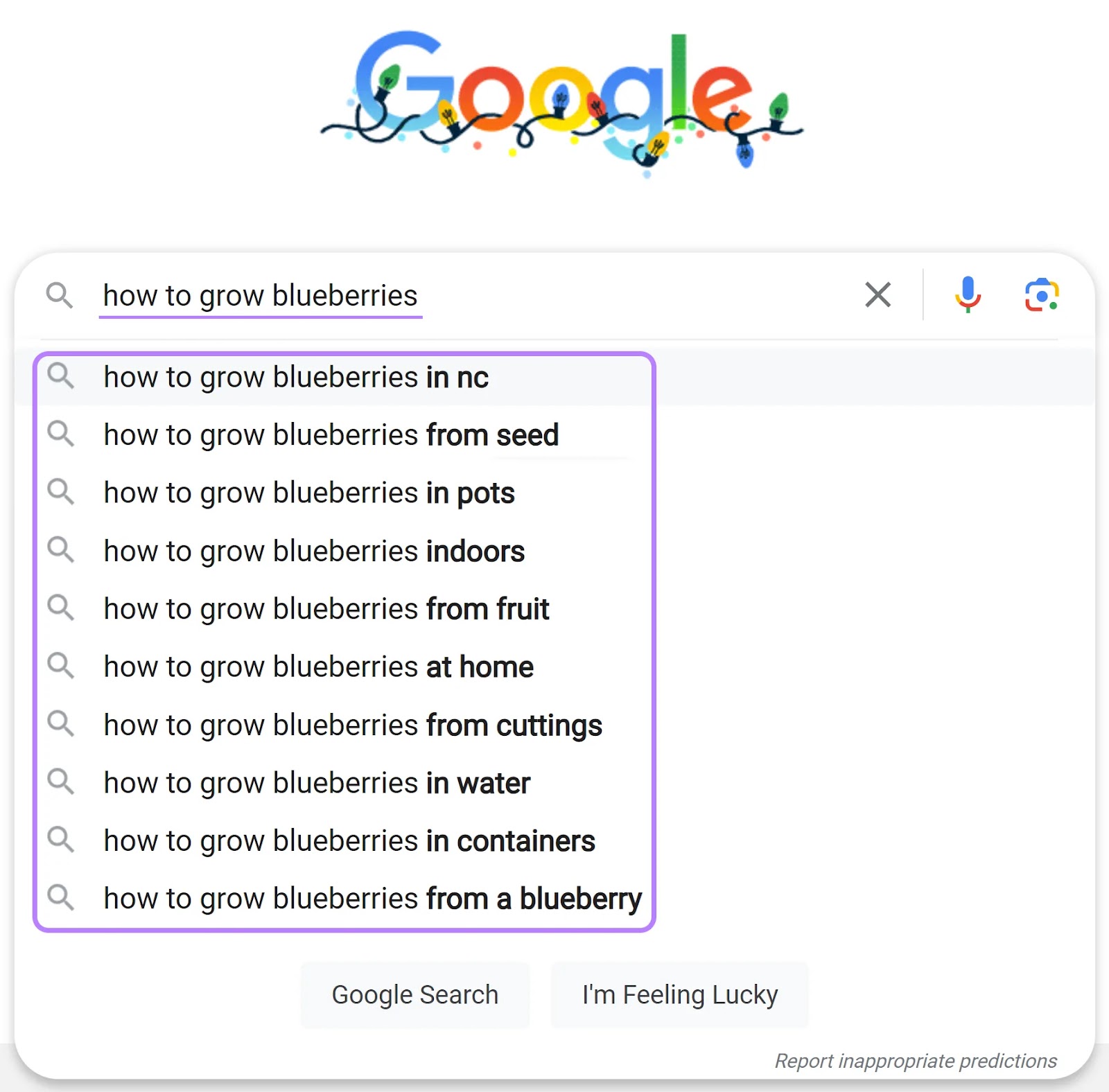As a SaaS company, driving organic traffic to your website is important for sustainable growth. One of the most effective ways to improve your SEO is by leveraging Google’s “People Also Search For” (PASF) feature.
At VH Info, we specialize in providing actionable insights for SaaS link building, and we’re here to guide you through the process of using PASF to boost your search engine rankings.
What is Google’s ‘People Also Search For’ Feature?

“People Also Search For” is a Google search feature that provides users with additional search suggestions related to their original query, thereby enhancing their overall search experience in Google’s search results.
It appears on the search engine results page (SERP) after users click on a website and then quickly navigate back to the original results. PASF aims to make it quicker and easier for users to refine their searches by offering relevant keywords and topics.
An awesome free tool for finding PASF queries is Google itself. Just search keywords or questions related to your chosen topic and check out the other search suggestions on the search page Google gives you.
To see PASF suggestions, just click on a result, then hit the back button to go back to the SERPs.
How Does “People Also Search For” Work in Google Search?

PASF generates queries based on several factors, including:
- The Location of the Searcher: The algorithm determines which searches are linked to the primary query by taking the searcher’s location into account.
- The Main Inquiry: The algorithm evaluates the primary query to find which queries are relevant to it.
- Previous Queries Entered a User: To decide which searches are connected to the primary query, the algorithm evaluates the search history of the user.
- The Device Used By the Searcher: The algorithm determines which searches are linked to the primary query based on the searcher’s device.
- Content on the SERP: To decide which queries are relevant to the primary query, the algorithm scans the SERP’s content.
- Data on A User’s Previous Search Activity: To decide which queries are relevant to the primary query, the system evaluates the searcher’s prior web browsing activity.
Why “People Also Search For (PASF)” is Important For SEO?
PASF provides valuable insights into user behavior and search intent. By understanding the related terms and queries users search for, including the original search, you can create targeted content marketing that addresses their needs and ranks higher in search engine results. Including PASF keywords in your SEO strategy helps you align your content more closely with user intent, ultimately improving your keyword rankings.
How to Use PASF Keywords For SEO?
- Keyword Research: Conducting thorough keyword research using PASF is essential for creating an effective SEO strategy. Identify relevant search terms while researching PASF keywords, and use them to develop detailed answers to common user queries.
- Content Ideas: PASF keywords provide a wealth of content ideas for your website. Use them to create blog posts, product descriptions, and other valuable content that addresses user needs and improves your search engine rankings.
- Frequently Ask Questions: Include PASF keywords in your website’s FAQ section to directly address customer queries and enhance your content for SEO purposes.
- On-Page SEO: Optimize your existing content using PASF keywords to drive more traffic and improve the overall user experience. Include these keywords in your headings, subheadings, and throughout your content to boost your on-page SEO.
- Long-Form Content: PASF keywords significantly form the structure for long-form content, such as blog posts. Use these keywords in your subheadings to create detailed, optimized content that covers users’ queries from all angles.
Using PASF Keywords For Better Content Planning
- Find Blog Topic Ideas: Analyze PASF data to uncover new blog topic ideas that address user needs and interests. Create content around these topics to attract more organic traffic to your website.
- Check Out What the Competition is Writing About: Use PASF to explore your competitors’ content strategies. Identify the keywords they’re targeting and create better-optimized content to outrank them in search engine results.
- Use PASF As A Starting Point For FAQs: PASF keywords make an ideal choice for forming FAQs on your website. Identify popular search questions and develop detailed answers to address customer needs directly.
- Use PASF to Improve On-Page SEO: Optimize your existing content using PASF keywords to drive more traffic and enhance the user experience. Include these keywords naturally throughout your content to improve your on-page SEO.
How to Rank For PASF Keywords?
- Identify Targeted PASF Topics: Analyze PASF data to identify targeted topics that align with your business objectives and user needs. Focus on creating content around these topics to improve your search engine rankings.
- Search Intent: Understand the search intent behind PASF keywords to create content that directly addresses user needs. Tailor your content to match the different types of search intent, such as informational, navigational, or transactional.
- Create an Outstanding Outline: Use PASF keywords to create a comprehensive content outline that covers all aspects of a topic. Ensure your outline is well-structured and includes relevant subheadings to improve readability and SEO.
- Interlinks and Backlinks: Strengthen your content’s SEO performance by creating a strategic plan for interlinking pages containing solutions for PASF queries. Additionally, develop high-value content to earn quality backlinks from authoritative websites.
People Also Search For Mobile SERPs
Over 80% of mobile SERPs and nearly 60% of desktop SERPs return a “People also search for” display. This highlights the importance of optimizing your content for mobile devices to capture this significant portion of organic traffic.
How to Research PASF Keywords?
To research PASF Keywords, follow these steps:
- Step 1: Identify a Core Topic- Choose a core topic related to your business or industry that you want to rank for in search engine results.
- Step 2: Run a Google Search With Your Seed Keyword- Enter your seed keyword into the Google search bar and analyze the PASF results that appear.
- Step 3: Check Related Searches- Scroll to the bottom of the search results page to find the “Related Searches” section. These queries offer additional keyword ideas related to your core topic.
- Step 4: Review the People Also Ask widget- Look for the “People Also Ask” (PAA) widget on the search results page. This section provides question-based keywords related to your core topic.
- Step 5: Search Using PASF and PAA Keywords- Conduct new searches using the PASF and PAA keywords you discovered to uncover even more related keywords and topics.
- Step 6: Use a Keyword Research Tool to Find Question-Based Keywords- Enter your PASF keywords into a popular keyword research tool like Ahrefs, SEMrush, or Answer the Public to discover a list of related questions people are asking about your topic. These tools provide valuable insights into the questions your target audience is searching for online.
- Step 7: Analyse PASF Keywords You Already Found- Analyze the PASF keywords you’ve collected to identify the most relevant and valuable ones for your content strategy. Consider factors such as search volume, competition, and relevance to your business.
How Can You See the People Also Search For (PASF) Box On Google?
- Organic Search Results: PASF typically appears in organic search results after a user clicks on a search result and then quickly returns to the search engine results page.
- Paid Search – Google Ads: PASF can also appear in paid search results, such as Google Ads. Advertisers can use PASF data to create more targeted and relevant ad copy that aligns with user search intent.
People Also Search For (PASF) Vs People Also Ask (PAA): How Are They Different?

PASF and PAA are both Google search features, but they serve different purposes:
- PASF provides related keywords and topics to help users refine their searches.
- PAA offers a set of questions and answers related to the user’s search query.
What About “Related Searches”?
“Related Searches” appear at the bottom of the search engine results page and can include images and featured snippets. They offer alternative phrases and keywords to help users refine their queries.
Tools to Find People Also Search For keywords
Keyword Magic Tool

A popular tool for SEO experts, SEMrush’s Keyword Magic Tool does what its name suggests. It provides a lot of valuable keyword insights, including hard-to-find PASF keywords and a variety of keyword suggestions.
This is the best way to enter your main keyword into this research tool, and it will show you many related keywords. These are organized by how important they are, their search volume, and other useful SERP features.
To find question-based keywords that connect to your PASF research, go to the “Questions” tab in the tool. This helps you see what questions people are asking. This way, you can shape your content to meet their needs better.
The Keyword Magic Tool makes your keyword research easier. It lets you understand keyword difficulty, keep track of your rankings, and find new content chances—all on an easy-to-use platform.
Ahrefs

Ahrefs is a popular SEO tool that offers keyword research capabilities, including the ability to find PASF keywords. Use the “Also rank for” report to discover related keywords your competitors are ranking for.
Google SERPs

Manually searching for your target keyword on Google and analyzing the PASF results is a simple way to find related keywords. However, this method can be time-consuming if you’re researching multiple keywords.
Keywords Everywhere

Keywords Everywhere is a free Chrome extension that shows PASF keywords for every query on Google’s search results page. This tool makes it easy to quickly identify relevant keywords and include them into your content strategy.
What Can You Do To Manage Duplicate PASF Topics?
- One Landing Page For Related Queries: Create a main landing page containing all the relevant links to topics you want to cover under the PASF box. This helps Google understand that you’re not creating duplicate content and allows users to find all related information in one place.
- Make Use of Canonical Tags: Implement canonical tags to indicate to search engines which version of a page should be considered the primary one. This helps prevent duplicate content issues when you have multiple pages with similar content.
- Redirect Users: If you have multiple pages with similar content, consider redirecting users to the most relevant or comprehensive page. This helps consolidate your content and improve your search engine rankings.
FAQ’s:
What is Google PAA or PASF?
Google PAA (People Also Ask) and PASF (People Also Search For) are search features that provide users with related questions and keywords to help them refine their searches and find the information they need.
How Do You Get On People Also Search For?
To appear in PASF results, create high-quality, relevant content that addresses user needs and includes related keywords. Optimize your content for search engines and build quality backlinks to improve your search engine rankings.
Can PASF Keywords Improve My Site’s Traffic?
Yes, including PASF keywords into your content strategy can help improve your site’s organic traffic. By targeting these related keywords, you can attract more relevant visitors to your website and improve your search engine rankings.
Can I See the Monthly Search Volume For PASF Keywords?
Yes, you can check the monthly search volume for “People Also Search For” keywords using various keyword research tools available online. These tools provide data on how often people search for specific PASF keywords, helping you identify the most popular and relevant ones to target in your content strategy.
How Does PASF Influence SEO?
PASF provides valuable insights into user search behavior and intent. By understanding and including PASF keywords into your content, you can create more targeted and relevant content that aligns with user needs, ultimately improving your search engine rankings and organic traffic.
Conclusion
Google’s “People Also Search For” feature is a powerful tool for SaaS companies looking to improve their SEO and drive more organic traffic to their websites.
By understanding how PASF works and including related keywords into your content strategy, you can create more targeted, relevant content that addresses user needs and ranks higher in search engine results.
At VH Info, we specialize in providing actionable insights and strategies for SaaS link building. Our team of experts can help you navigate the complexities of SEO and develop a comprehensive content strategy that leverages PASF keywords to drive sustainable growth for your business. Contact us today to learn more about how we can help you achieve your SEO goals.

